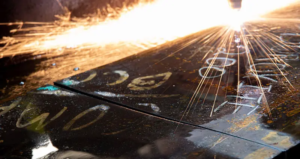Tips for Creating Technical Drawings for Fabricators
2 min read
A clear technical drawing is the best tool for a successful project. It is the common language between designer and fabricator. For shops specializing in small batch metal manufacture UAE, a good drawing saves time and prevents errors.
Here are some tips to make your drawings easy to understand and use.
Start with the Right Views:
Show the object from multiple angles. Use a front, top, and side view. This gives a complete picture of the shape. Isometric views can help show the part in three dimensions. Pick views that best show the part’s features without being repetitive.
Dimension with the Fabricator in Mind:
Place dimensions where the fabricator will measure. Think about how the part will be made. A machinist needs different information than a welder. Avoid placing all dimensions on one view. Spread them out logically. This makes the drawing cleaner.
Include All Critical Tolerances:
Not every dimension needs to be perfect. Specify the tolerances that matter for the part to work. Label these clearly. For other features, use a general tolerance note. This tells the fabricator what level of precision is acceptable.
Use Clear Section Views:
Some parts have hidden internal features. A section view cuts through the object to reveal these details. This is much clearer than using hidden lines. Label your section views, like “Section A-A,” so there is no confusion.
Specify Materials and Finishes:
Always state the material type. Use standard names like “Stainless Steel 304” or “Aluminum 6061.” If a surface finish is needed, specify it. Indicate the roughness or a finish like “Powder Coat Black.” This guides the entire process.
Add Helpful Notes:
Notes provide extra information that dimensions cannot. This includes details about deburring sharp edges or a specific welding standard. Keep notes concise and place them in a clear area of the drawing. They prevent questions later.
Keep the Drawing Clean and Organized:
A cluttered drawing is hard to read. Use white space well. Do not crowd dimensions. Align your notes neatly. A well-organized drawing looks professional and is easier for the fabricator to follow correctly.
Use Standard Conventions:
Stick to industry-standard symbols and line types. Everyone understands a dashed line is a hidden feature. Using common practices makes your drawing universal. This avoids misinterpretation by the workshop team.
A great technical drawing is a bridge from your idea to a real, physical part. Taking the time to make it clear and complete helps your fabricator deliver exactly what you imagined.



